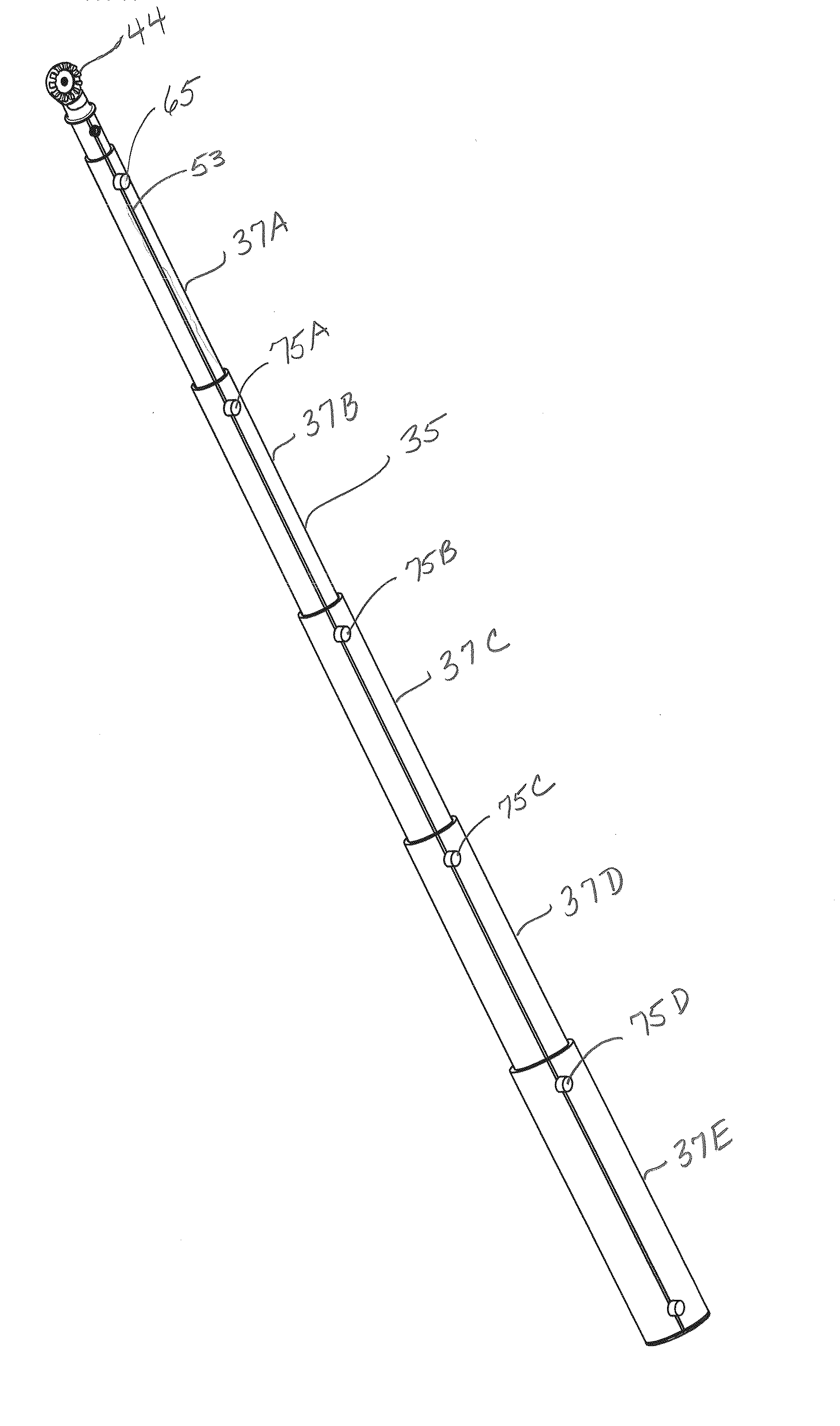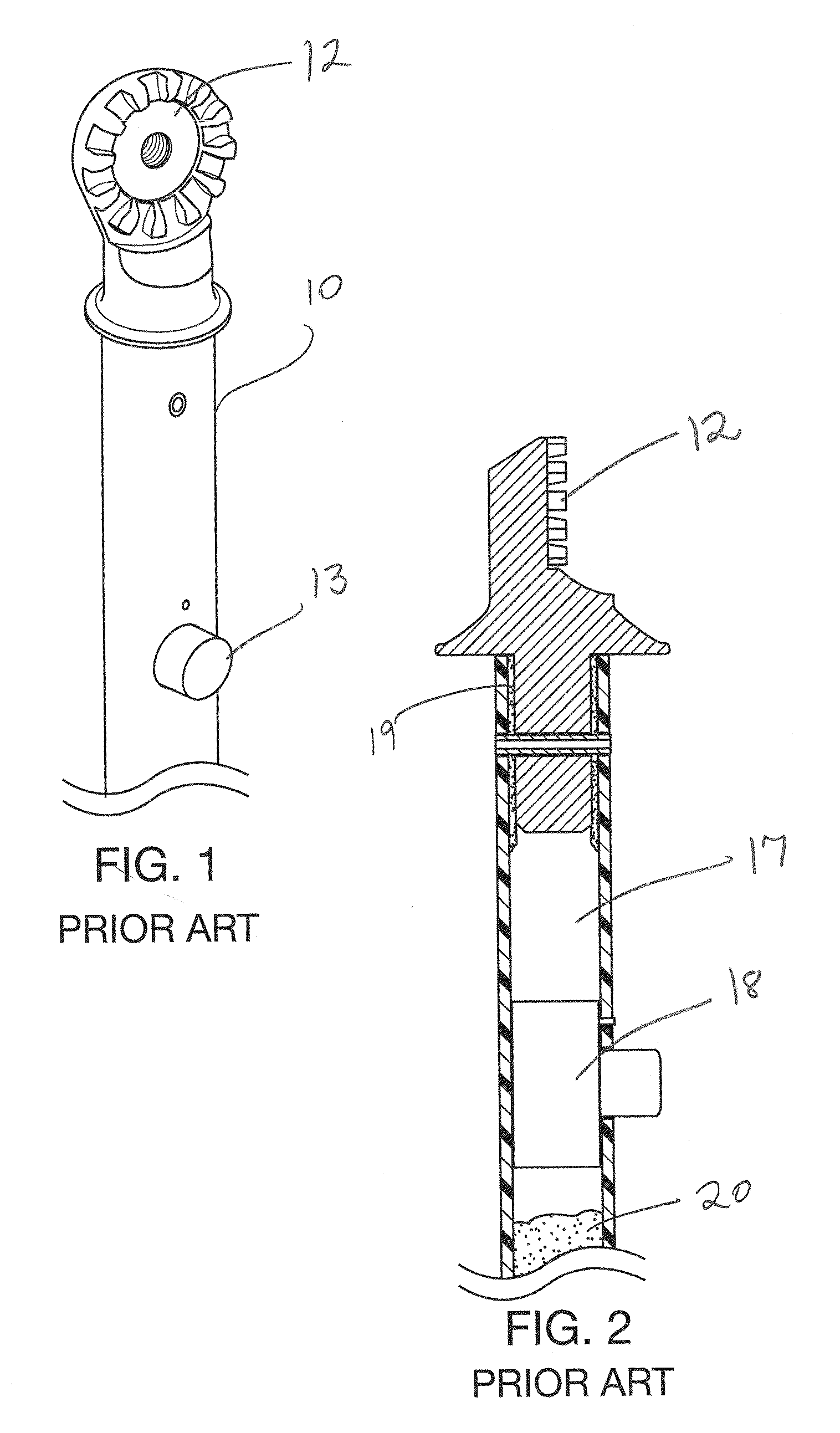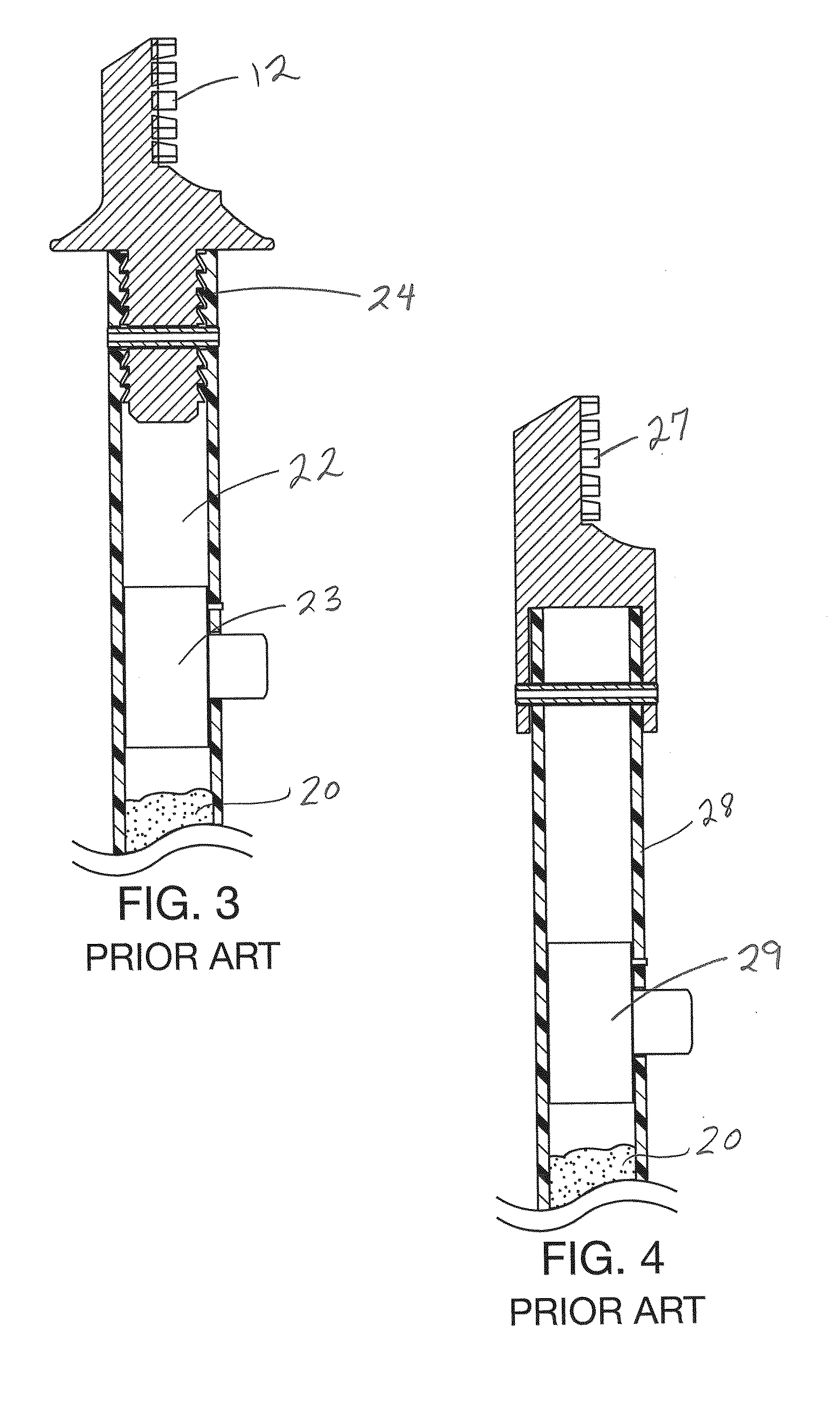Utility pole with removable supporting push button
a technology of push button and utility pole, which is applied in the direction of rod connection, manufacturing tools, hoisting equipment, etc., can solve the problems of button assembly significant wear and tear, power circuit remains a very dangerous installation, and the danger is particularly acute, so as to achieve convenient maintenance
- Summary
- Abstract
- Description
- Claims
- Application Information
AI Technical Summary
Benefits of technology
Problems solved by technology
Method used
Image
Examples
Embodiment Construction
[0038]The lineman's pole, described in more detail below, can be viewed from the perspective of the lineman using the pole. From this perspective, the lineman's pole has a “proximal” end closest to the lineman and a “distal” end farthest from the lineman. The distal end, therefore, is typically the end that a lineman ultimately manipulates remotely to adjust an overhead or underground circuit that cannot be reached by hand. The proximal end is often the end having the telescoping section of the greatest diameter and allows the lineman to grip the pole with a steadier force than a thinner diameter would allow. One goal, of course, is to provide a pole that can be used with precision on a circuit element that is a significant distance from the user. After all, the most distal point on a lineman's pole will be used to replace the dexterity of a human hand in working on a circuit element.
[0039]The lineman's pole (35) shown in the figures consists of sections (37A-37E) that telescope tog...
PUM
 Login to View More
Login to View More Abstract
Description
Claims
Application Information
 Login to View More
Login to View More - R&D
- Intellectual Property
- Life Sciences
- Materials
- Tech Scout
- Unparalleled Data Quality
- Higher Quality Content
- 60% Fewer Hallucinations
Browse by: Latest US Patents, China's latest patents, Technical Efficacy Thesaurus, Application Domain, Technology Topic, Popular Technical Reports.
© 2025 PatSnap. All rights reserved.Legal|Privacy policy|Modern Slavery Act Transparency Statement|Sitemap|About US| Contact US: help@patsnap.com



